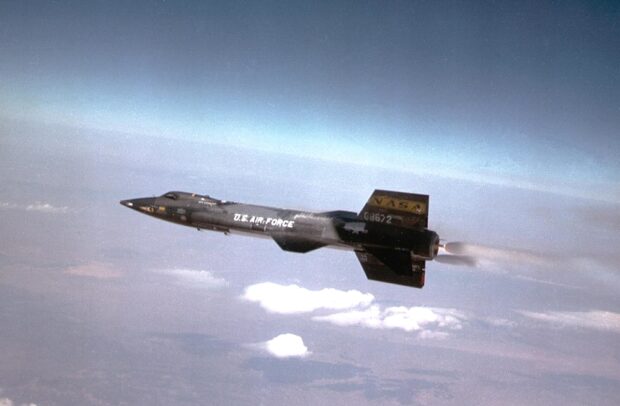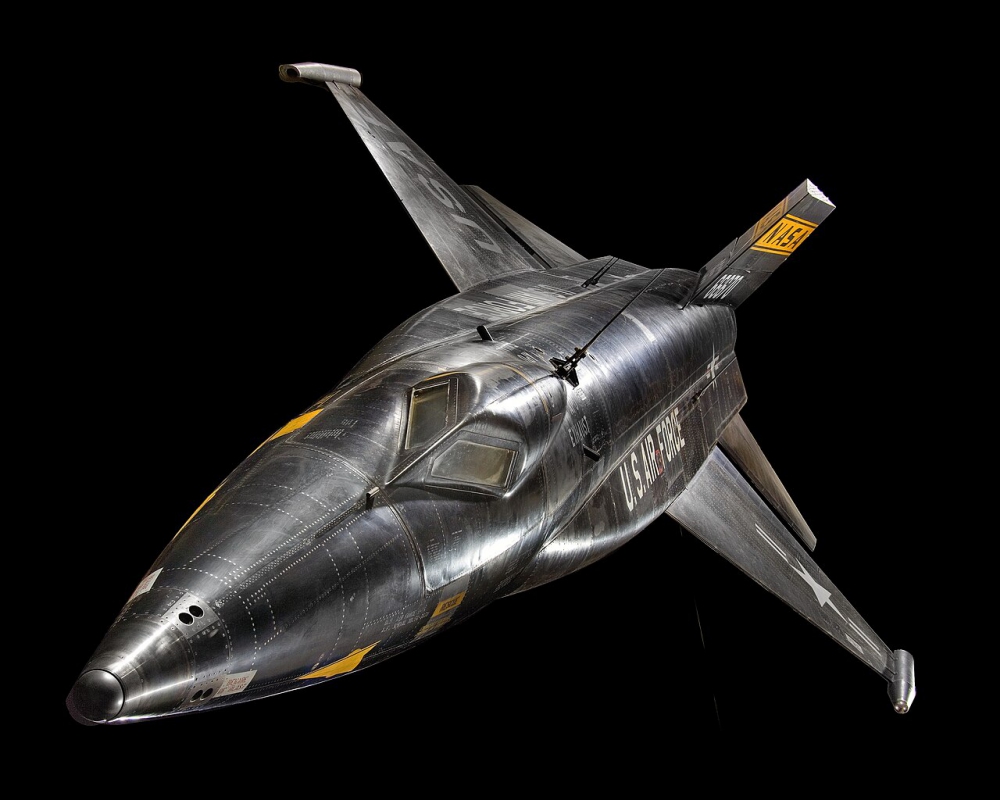On October 3rd, 1967, at a millisecond before 14:32 local time, Air Force Major William J. “Pete” Knight hit the button. His North American X-15, one of the most experimental aircraft ever built, lit up its 600,000-horsepower XLR99 engine. The plane began to tear through the atmosphere, approaching a record-breaking speed of 4,520 miles per hour – Mach 6.7.
Every gauge and meter in the cockpit testified to the brutal forces at play, where the temperature of the aircraft’s exterior escalated to an incendiary 2,500 degrees Fahrenheit. The X-15 was melting around its pilot.
The aircraft ascended, the blue sky darkened, giving way to the silent, black expanse of space. Violent shockwaves rocked the plane. And suddenly it began to fall apart.
The North American X-15 is a hypersonic rocket-powered aircraft. It was operated by the United States Air Force and the National Aeronautics and Space Administration as part of the X-plane series of experimental aircraft. The X-15 set speed and altitude records in the 1960s, crossing the edge of outer space and returning with valuable data used in aircraft and spacecraft design.
The X-15’s highest speed, 4,520 miles per hour (7,274 km/h; 2,021 m/s), was achieved on 3 October 1967, when William J. Knight flew at Mach 6.7 at an altitude of 102,100 feet (31,120 m), or 19.34 miles. This set the official world record for the highest speed ever recorded by a crewed, powered aircraft, which remains unbroken.
During the X-15 program, 12 pilots flew a combined 199 flights. Of these, 8 pilots flew a combined 13 flights which met the Air Force spaceflight criterion by exceeding the altitude of 50 miles (80 km), thus qualifying these pilots as being astronauts; of those 13 flights, two (flown by the same civilian pilot) met the FAI definition (100 kilometres (62 mi)) of outer space. The 5 Air Force pilots qualified for military astronaut wings immediately, while the 3 civilian pilots were eventually awarded NASA astronaut wings in 2005, 35 years after the last X-15 flight.
Design and development
The X-15 was based on a concept study from Walter Dornberger for the National Advisory Committee for Aeronautics (NACA) for a hypersonic research aircraft. The requests for proposal (RFPs) were published on 30 December 1954 for the airframe and on 4 February 1955 for the rocket engine. The X-15 was built by two manufacturers: North American Aviation was contracted for the airframe in November 1955, and Reaction Motors was contracted for building the engines in 1956.
Like many X-series aircraft, the X-15 was designed to be carried aloft and drop launched from under the wing of a B-52 mothership. Air Force NB-52A, “The High and Mighty One” (serial 52-0003), and NB-52B, “The Challenger” (serial 52-0008, also known as Balls 8) served as carrier planes for all X-15 flights. Release of the X-15 from NB-52A took place at an altitude of about 8.5 miles (13.7 km) and a speed of about 500 miles per hour (805 km/h).
The X-15 fuselage was long and cylindrical, with rear fairings that flattened its appearance, and thick, dorsal and ventral wedge-fin stabilizers. Parts of the fuselage (the outer skin) were heat-resistant nickel alloy (Inconel-X 750).
The retractable landing gear comprised a nose-wheel carriage and two rear skids. The skids did not extend beyond the ventral fin, which required the pilot to jettison the lower fin just before landing. The lower fin was recovered by parachute.
Sources: Wikipedia; YouTube


